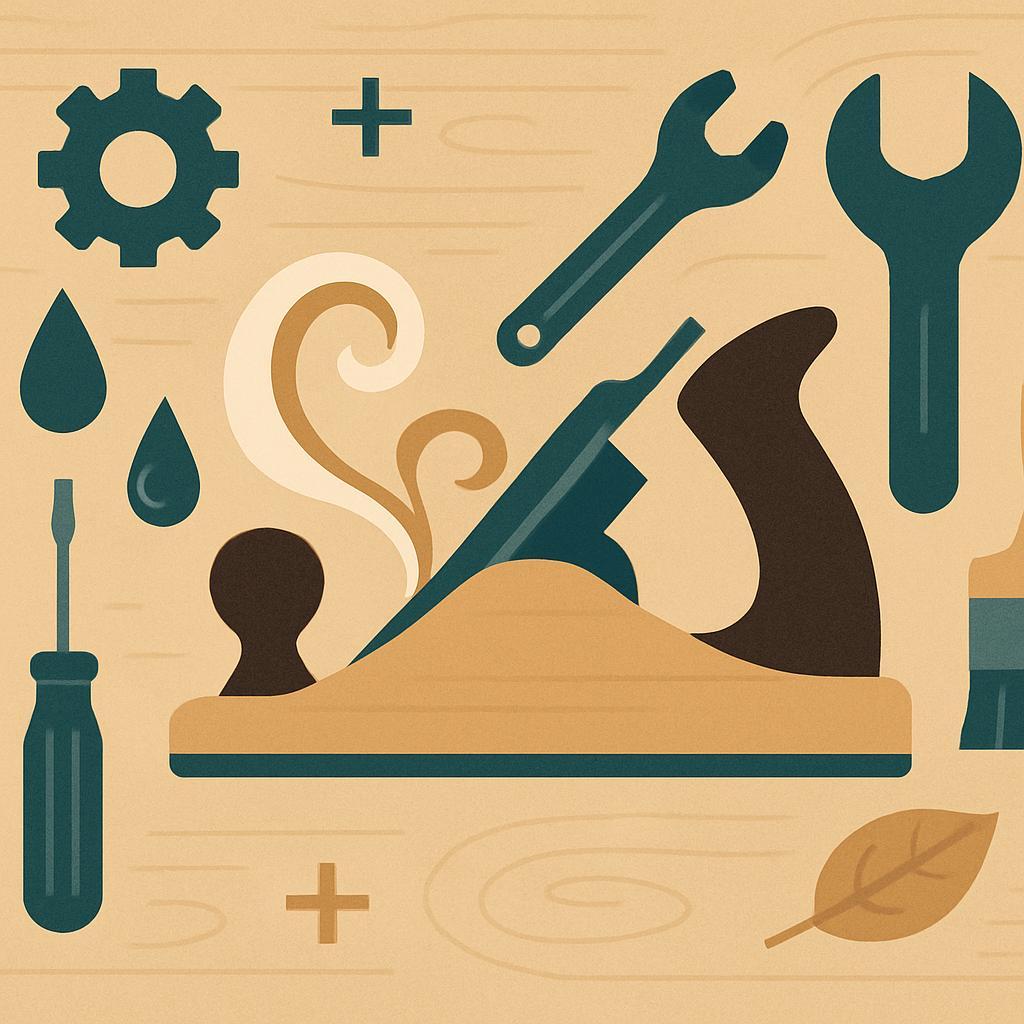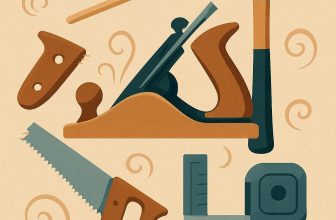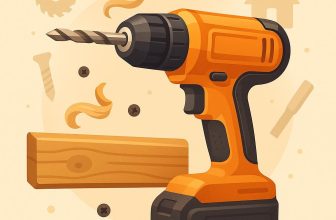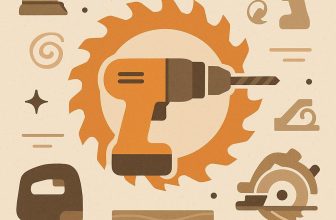
What if one careful habit could turn a dull blade into a lifelong partner in your workshop? Woodworking relies on precision and trust-two things that hinge on the tools you reach for every day. Proper care isn't vanity; it's a safeguard against accidents, imperfect cuts, and costly replacements. This article helps enthusiasts understand how to clean, sharpen, lubricate, and store common tools, schedule maintenance, and spot wear before it becomes a problem.You'll gain practical routines, simple checklists, and confidence to keep edges true, hardware dependable, and projects flowing smoothly from start to finish.
Sharpening and edge maintenance for longevity of woodworking tools
Sharpening is not just about getting a razor edge for today; it's about building longevity into your toolkit. Start with understanding when to sharpen versus when to hone: sharpening removes material to re-true a dull edge, while honing keeps the edge aligned and ready for use. regular light touch-ups prevent deep nicks and reduce the amount of material you must remove later. After you finish a session, wipe blades clean, dry them, and apply a light coat of oil or wax to deter rust. Store chisels, plane irons, and saw blades with edge guards or in a dedicated rack so the edges stay protected.
| Media | Grit range | Best For | Notes |
|---|---|---|---|
| Oil stones | 100-600 | Coarse shaping, rust resistance | Oil helps carry away particles |
| water stones | 400-8000 | Fast material removal, fine honing | Keep surface flat; soak or splash as needed |
| Diamond plates | 120-12000 | Dull edges, carbide blades | Low maintenance, long life |
| Leather strops | 0 | Final polishing, burr removal | Use with honing compound |
Choosing the right sharpening media lays the groundwork, but a consistent routine brings it to life. Practice a simple workflow: assess the edge for nicks, and if you find a chip, regrind toward a stable bevel; if the edge is only dull, begin with a coarser grit and progress through finer stones. Maintain a steady angle throughout passes, work evenly along the edge, and avoid overheating the steel by using short, controlled strokes.Consider adding a micro-bevel (a tiny secondary bevel) to boost durability without sacrificing precision. Keep the blade back flat by periodically flattening with a coarser grit until the surface is true, then finish with fine honing and a quick strop to remove the burr and polish the edge. After use,dry thoroughly and apply a thin film of oil to deter rust,storing tools in a dry,protected spot with blades sheathed or guarded.
Build Your Dream Workshop on a Budget →
Cleaning and rust prevention to extend woodworking tool life
After every session, treat metal surfaces with care: wipe away moisture and dust with a clean, dry cloth. Avoid soaking tools or leaving them damp; water accelerates rust and can penetrate wooden handles.for bare cutting edges, apply a thin film of light mineral oil or a dedicated tool oil using a soft cloth, then wipe off any residue. This creates a protective barrier and keeps edge geometry intact for the next cut.Remember to dry wooden parts as well, as moisture can creep into joints and cause finish damage.
Develop a simple, repeatable cleaning routine that matches your tools. Use a soft brush to lift dust and pitch from blades, irons, and chisel edges; for stubborn spots, very gently use 0000-grade steel wool and then re-oil. If rust appears, treat promptly with a gentle polish and reapply oil. After cleaning, consider a light coat of wax (carnauba or neutral paraffin) on iron surfaces to seal out humidity. Store blades and irons dry and flat or in protective sleeves that allow air circulation.
Storage and climate control are your best rust-prevention allies. Keep a stable relative humidity in the 40-60% range in the workshop; use a dehumidifier or silica gel packs in tool cabinets. Do not pile damp tools together or leave them in closed plastic cases with moisture inside. A dry, ventilated cabinet with a thin wax or oil coating on metal parts provides ongoing protection. periodically inspect for early rust spots and reapply the oil or wax as part of a quarterly maintenance check.
To keep rust at bay in the long run, establish a simple maintenance rhythm: perform a wipe-down after each session, oil or wax on a schedule, and review storage conditions every season. A small routine done consistently beats large rust problems and keeps tools performing at thier best.
| Tool area | Care focus |
|---|---|
| Cutting edges (blades, irons) | Dry after use; apply a thin oil film; light wax finish; gentle polish for rust |
| Saw blades | Dry thoroughly; oil lightly; store flat or in protective sleeve |
| Cast-iron surfaces / planes | Wipe clean; apply wax or oil; store in a dry, ventilated space |
Build Your Dream Workshop on a Budget →
Proper lubrication for moving parts and smooth operation
Proper lubrication forms the quiet heartbeat of a well-tuned shop. When moving parts glide instead of grind, tools cut more cleanly, heat stays in check, and bearings last longer. Choose lubricants that match the material interfaces you have-light machine oil for metal-on-metal joints, a wax-based treatment for sliding cast-iron surfaces, and silicone sprays for plastic or rubber seals. Apply sparingly: a thin film is enough to seal out dust but not so much that it collects grime. Remember, cleanliness is a prerequisite; wipe away old grease and dust before you re-lubricate.
Where to apply lubrication matters as much as what you use. Focus on rails, dovetails, and sliding tables, then on bearings and spindles. For table saw fences and extension rails, a light wax or dry-lub spray keeps filings from sticking and preserves alignment. On drill press quills and router collets, a few targeted drops of light machine oil after a run or two prevent stiction and heat buildup.for gears, pinions, and bushings inside geared components, follow the manufacturer's guidance and apply a thin film after several hours of operation in dusty shops. Use silicone-safe products around seals, and avoid petroleum-based greases near plastics.
To build a reliable lubrication habit, pair it with a brief inspection routine. Unplug the tool, wipe surfaces clean, check for grime in joints, and note any play or unusual sounds. Apply lubricant only to moving contact points; never on the cutting edge or in dust-collecting cavities. After applying, wipe away any excess and run the tool briefly to distribute the film evenly.Keep a small labeled bottle and a lint-free cloth in your tool chest for quick touch-ups.
| Component | Recommended Lubricant | Frequency | Notes |
|---|---|---|---|
| Table saw fences & rails | Wax or dry-lub spray | Every 20-40 hours of use | Wipe clean after use |
| Drill press quill & spindle | Light machine oil | After initial setup and then every 20-40 hours | Avoid over-oiling |
| Router bearings & collets | Manufacturer-approved oil/grease | Per manual or after dusty sessions | Apply sparingly |
| Gears & bushings | Thin film oil or grease per manual | Periodic maintenance | Clean seals first |
Build Your Dream Workshop on a Budget →
Storage strategies to protect blades and prevent damage
Storing blades properly is the first line of defense against nicks, corrosion, and dull edges. When blades sit in damp air or rattle around in a drawer, tiny imperfections can form and escalate with use. Create a dedicated storage zone that isolates each blade from impact and moisture, and you'll notice smoother cuts and longer tool life.
Protective housings and organized placement make a big difference. Use individual blade sleeves, wallets, or a foam-lined organizer so edges never touch metal or wood. Label compartments by size or type, and store blades in a dry, cool spot away from solvents or heat. A shallow, rigid container with a snug lid protects blades from accidental bumps and makes it easy to grab the right one without rummaging.
Environmental control matters. If your shop experiences humidity swings, keep blades in a cabinet with controlled air exchange and desiccants. silica gel packs or a small dehumidifier can help, but ensure there's some airflow to avoid moisture buildup behind plastic lids. Regularly inspect the storage area for condensation and wipe away any water spots promptly to preserve coatings and edge integrity.
| Scenario | Recommended Storage Method | Why it Helps |
|---|---|---|
| Dry, climate-controlled workshop | Rigid blade organizer with individual slots; silica gel nearby | Prevents edge contact and maintains low humidity |
| Humid or damp environments | Ventilated cabinet with desiccants; avoid sealed plastic bags | Reduces rust risk by lowering humidity |
| Seasonal or long-term storage | Protective sleeves in labeled container; light oil if needed | preserves coatings and prevents corrosion during gaps |
Quick-reference habits establish a routine: wipe blades dry after use, re-sheath immediately, and return them to their designated slots.Check the cabinet monthly for signs of rust, moisture, or worn sleeves. A simple rotation and periodic humidity check keep blades ready for your next project and extend their life well beyond the initial purchase.
build Your Dream Workshop on a Budget →
Calibration and alignment checks to preserve accuracy
Calibration and alignment checks help preserve accuracy across every cut. In a busy shop, tool drift can creep in from routine use, residue on measuring surfaces, or wear on fences and gauges. By establishing a quick sanity-check cadence before projects, you safeguard precision and reduce wasted material. Start with the basics: verify that the fence is square to the blade, confirm the miter gauge travels true at 90 degrees, and ensure the workpiece sits flat against the table with solid support. Keeping a small log of results helps you spot gradual drift before it becomes a problem.
Table saws, routers, drill presses, and planers all benefit from regular alignment.To test blade-to-table squareness, place a square against the blade and along the fence at both the front and back edges; adjust the trunnions or rails if you detect a tilt. Check the fence for parallelism to the blade by sliding a straightedge along the edge and looking for even gaps across its length. For the miter gauge, verify it locks at a true 90 degrees and re‑align the gauge bar if the reading is off. If you use dado stacks or specialty jigs, re-check these references any time you replace blades or change cutters.
| Tool | What to check | How to verify |
|---|---|---|
| Table saw blade to fence | Perpendicular to table; parallel to fence | Place a square against blade and fence; check front and back; adjust trunnions if inconsistent |
| Fence to blade | fence parallel to blade | Make a test cut on scrap and measure gaps along the fence edge |
| Miter gauge | Perpendicular to blade | Lock at 90° with a square; tweak gauge bar until true |
| Drill press spindle | Runout and plumb | Use a dial indicator or pencil mark test; rotate chuck and observe wobble |
Beyond the bench tops, keep the habit of routine checks as part of overall tool care. Record readings, note any adjustments, and recheck after moving equipment, changing blades, or after heavy use. Integrate a lightweight calibration routine into your monthly or project-based checklist so accuracy stays front and center, and your finished work remains clean, tight, and true.
Build Your Dream Workshop on a Budget →
Battery care and charging practices for cordless woodworking tools
Cordless woodworking tools rely on lithium-ion batteries that respond best to respectful handling as much as performance. To extend life, treat every charge as a precision step: avoid letting cells sit at a full charge in hot spaces, and minimize deep discharges that stress the chemistry. For storage, aim for about 40-60% and keep batteries in a cool, dry spot away from direct sun, heat sources, or freezing temperatures. Before you head back to the shop,give the battery a quick visual check for swelling or corrosion on the terminals,and replace if anything looks abnormal.
Charging practices matter just as much as the tool you own. Always use the original charger or a reputable equivalent with matching voltage and current ratings. Charge in a ventilated area and avoid extreme temperatures-neither searing heat nor subzero cold.If a tool will be idle for days or weeks, remove the battery from the tool and store it separately, and top up to a moderate level if the charge has dropped below a healthy threshold before resuming work.
To keep storage simple, here is quick storage guidance at a glance:
| Scenario | Ideal Charge | Recommended Temp | Action |
|---|---|---|---|
| short-term (days-weeks) | 40-60% | cool, dry room | check periodically and recharge as needed |
| Long-term (months) | 40-60% | cool storage | recharge every 2-3 months |
| Active use | Full capacity | room temperature | charge after use; avoid complete discharge |
During daily use, monitor battery temperature while charging; if the battery becomes uncomfortably hot, stop charging and let it cool in a ventilated area. Handle damaged packs with care-never charge a swollen or punctured battery-and keep contact points clean and dry. Store batteries away from children,and recycle old cells at approved collection points in accordance with local regulations to minimize environmental impact.
Build Your dream Workshop on a Budget →
Q&A
How often should I clean and inspect my woodworking tools for longevity?
Wipe tools down after use and do a quick inspection before and after each session. Look for rust, burrs, loose screws, and dull edges, addressing them promptly. Keep a simple log to note maintenance like cleaning and sharpening dates.
What's the best routine for sharpening chisels and plane irons?
Sharpen with the right stones or a honing system, keeping the bevel angle consistent and avoiding overheating the edge. Use a light touch, progressively finer grits, and finish with a strop or leather to polish. Wipe dry and store the blade with a light coat of oil to prevent rust.
How should I protect tool edges and handles from rust and wear?
Keep metal surfaces dry and lightly oiled when stored, especially in humid spaces. Use blade guards, cases, and racks to reduce nicks and scratches on edges and handles. Include desiccants or climate control to limit moisture in tool storage.
What maintenance steps are needed for power tools like routers and drills?
blow out and wipe away dust from vents and moving parts after use, and inspect cords or batteries for wear. Lubricate manufacturer-specified points and check chuck or collets for smooth operation. Regularly test safety features and store tools in a clean, dry place.
The Conclusion
Ultimately, the best takeaway is simple: well-cared tools perform more reliably, last longer, and reward patience with cleaner cuts and safer work. A little routine-cleaning, sharpening, proper storage, and a thoughtful maintenance schedule-transforms ordinary sessions into smoother, more precise ones. For woodworking enthusiasts, quality tools are not just equipment but partners in every project; neglect shortchanges both craft and joy, while attention yields consistency and confidence. So pick up a rag and a sharpener,start a small maintenance ritual,or dive into another guide. Apply these habits, and let your workshop grow calmer, brighter, and more capable, ready for your next project.







Great tips! Keeping tools well-maintained definitely extends their life and ensures better performance.
Absolutely agree, Beth! Investing a little time in regular cleaning and proper storage can make a huge difference. It’s amazing how much a sharp blade or well-oiled hinge can improve the quality of your work!
I couldn’t agree more! A little bit of effort goes a long way in preventing deterioration and can really enhance your woodworking experience. Plus, there’s something so satisfying about using tools that are in top condition!
I love these insights! It’s fascinating how proper care not only preserves our tools but also enhances the overall craftsmanship. A well-maintained tool feels like an extension of your creativity!
Totally on board with all these comments! Maintaining our tools not only boosts their lifespan but also elevates our skills as woodworkers; it’s like giving our creativity the best tools to thrive!
Couldn’t have said it better! Taking the time to care for our woodworking tools not only ensures they last longer but also brings out the best in our projects-it’s a true partnership between the craftsman and their tools!
So true! Regular maintenance not only keeps our tools performing at their best but also makes the whole woodworking process more enjoyable and efficient-there’s nothing like the joy of working with tools that are well cared for!
Absolutely! Investing time in our tools is like investing in our craft; it pays off in the quality of our work and the enjoyment we get from each project. It’s amazing how much of a difference proper care can make!
I completely agree with all the great points made here! Caring for our woodworking tools is essential for achieving precision and satisfaction in our projects; there’s nothing quite like the feeling of working with tools that are in top-notch condition!
I completely echo all these sentiments! Proper care and maintenance of our woodworking tools not only extends their lifespan but also enhances the overall experience and outcome of our projects; it’s all about respect for our tools and the craftsmanship involved!
Absolutely agree with all of you! Maintaining woodworking tools is essential for achieving the best results and prolonging their life; every craftsman knows that a well-cared-for tool not only performs better but also brings a certain joy to the craft that enhances creativity and precision!
I couldn’t agree more with everyone’s insights! Consistent maintenance not only boosts the performance of our tools but also fosters a deeper connection to our craft; the satisfaction of using well-maintained tools truly elevates the woodworking experience and leads to exceptional results!
I wholeheartedly agree with everyone here! Taking the time to properly care for our woodworking tools not only ensures they perform at their best but also deepens our appreciation for the craft; there’s a unique sense of pride and accomplishment that comes from using tools that are well-maintained and ready to help us create amazing pieces!
Absolutely! It’s so important to nurture our tools; not only do they last longer and work better, but maintaining them also gives us a deeper respect for our craft and enhances our overall experience as woodworkers.